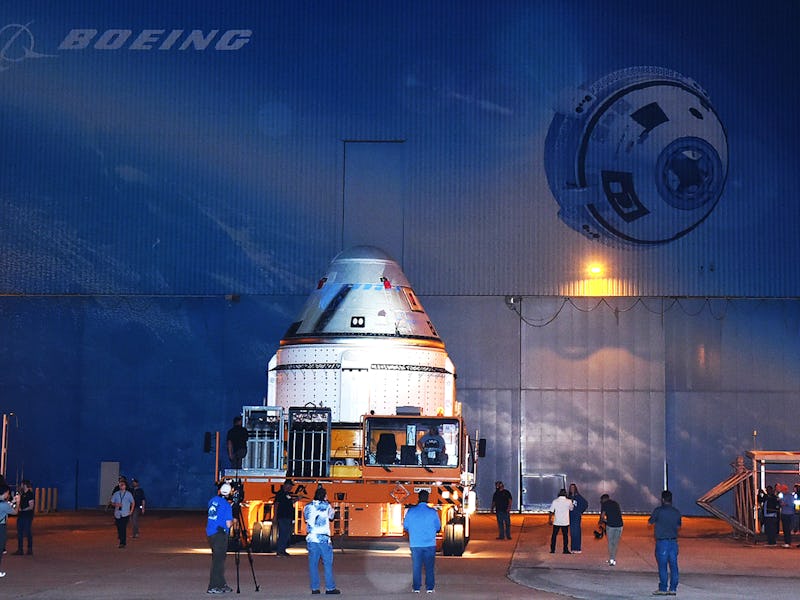Boeing Starliner Is Just Days Away From Its First Human Test Flight
All eyes are on Starliner.

The Boeing Starliner is less than a week away from its critical Crew Flight Test.
NASA astronauts Sunita “Suni” Williams and Barry “Butch” Wilmore will be the first humans to fly aboard the low-Earth orbit spacecraft. Their flight will take off as early as Monday, May 6 at 10:34 p.m. Eastern from Cape Canaveral Space Force Station in Florida, atop a United Launch Alliance Atlas V rocket. NASA will be streaming the event live, which you can watch here.
Williams and Wilmore will run tests onboard the spacecraft. Starliner will then dock with the International Space Station (ISS). After a week inside the orbiting laboratory, they’ll reboard Starliner. The reusable spacecraft will land back to Earth in the southwestern United States.
Why is this launch so important?
NASA astronaut Suni Williams arrives at the Kennedy Space Center ahead of the May 6 Starliner launch. She is the Crew Flight Test pilot.
Starliner flew crewless in late 2019 for Orbital Flight Test 1. But it failed to dock with the ISS. This important maneuver finally happened on the following test, Orbital Flight Test 2, in mid-2022. On Friday, NASA announced Williams and Wilmore had completed a start-to-finish mission dress rehearsal for the upcoming launch.
If Starliner aces Crew Flight Test, NASA will have a second company to take its astronauts into Earth’s atmosphere. NASA has already ordered six Starliner crew rotation missions to the space station. It can carry up to four astronauts, or a mix of passengers and cargo.
A much needed back up plan
Currently only one spacecraft, the SpaceX Crew Dragon, launches astronauts from the United States. After the Space Shuttle Program ended in July 2011, spacefarers could only launch from Russia or China.
Suni Williams, NASA astronaut and Starliner mission pilot, and Butch Wilmore, NASA astronaut and Starliner mission commander, speak to the media as the Boeing Starliner spacecraft rolls out of the Commercial Crew and Cargo Processing Facility on its way to Space Launch Complex 41 at Kennedy Space Center on April 16, 2024 in Cape Canaveral, Florida.
NASA awarded contracts to SpaceX and Boeing to develop spacecraft that could carry astronauts into low-Earth orbit as part of its Commercial Crew Program. SpaceX debuted Crew Dragon on May 30, 2020. Monday will be Boeing’s first crewed flight.
Boeing would provide a backup plan. The ISS must be continuously occupied and if something unexpected happens in orbit, station maintenance and upkeep must continue.
If a spacecraft cannot continue its work, having two low-Earth orbit providers rather than one would provide greater flexibility. In a press conference on March 22, Dana Weigel, deputy manager of the ISS Program at NASA, cited a recent example. A micrometeoroid strike in December 2022 left a Russian Soyuz capsule defunct in space. But since Crew Dragon was in operation, other crews could fly up and back. NASA also had to depend on another country to return NASA astronaut Frank Rubio to Earth. Stranded until a rescue Russian Soyuz replaced it, Rubio wound up breaking the record for longest single spaceflight in U.S. history, at 371 days.
It’s a situation NASA hopes never to repeat. Starliner may soon be ready to answer the call.